




“What if I told you a scientist had recently discovered a way to remove up to 98% of the allergens in peanuts without affecting the flavor, thereby diminishing a severe health threat to some 2.8 million Americans who suffer from peanut allergies?
Or that a small family business is working on a project that could quench the thirst of billions of people around the world with technology that’s capable of taking water from any source and making it safe to drink?
If that sounds a little like science fiction to you, you wouldn’t be alone. But both examples exist today as part of the hundreds of scientific breakthroughs made by USDA and USDA-supported scientists since the start of the Obama Administration. Our scientists are pushing the boundaries of what’s possible and creating new miracles on behalf of the American people year after year. Their incredible dedication underscores the importance of government funding for research so that we can continue to make cutting-edge scientific breakthroughs with real potential for commercial application and growth.”
– Secretary Vilsack
Join us throughout the month of November as we tell the story of how a strong commitment to agricultural discovery has enabled USDA to deliver problem-driven and solutions-based research and development that empowers farmers, foresters, ranchers, landowners, resource managers, professors and policymakers manage the risks we face. We invite you to catch up on Chapter XI on our Medium site and follow along on the USDA blog and by using #USDAResults.



Throughout the month we’ll tell the story of how a strong commitment to agricultural discovery has enabled USDA to deliver problem-driven and solutions-based research and development.
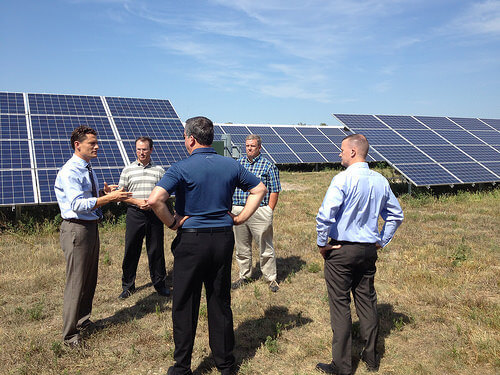
Last week, Secretary Vilsack announced hundreds of new rural energy efficiency projects like the one pictured here in Central City, Nebraska.
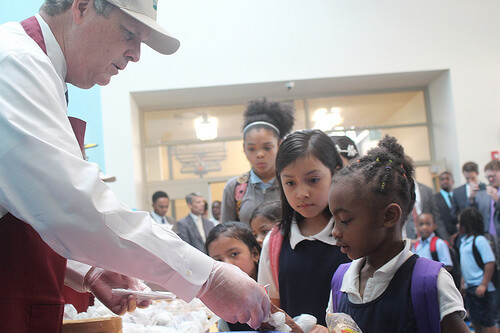
This season the USDA Rural Housing Service was able to partner with the USDA Food and Nutrition Service (FNS) to feed more kids than ever before.

Many of our nation’s bats are facing population declines to near-extinction levels, primarily because of disease and loss of habitat.

In Conversation with #WomeninAg: Katina Hanson
Every month, USDA shares the story of a woman in agriculture who is leading the industry and helping other women succeed along the way. This month, we hear from USDA’s own Katina Hanson, Chief of Staff to the Associate Administrator for Policy and Programs at the Farm Service Agency (FSA). In addition to her duties as Chief of Staff, Katina led the successful implementation of the Biofuel Infrastructure Partnership (BIP), a multimillion dollar investment to make renewable fuels more available to consumers across the country.
Celebrating 80 Years of Partnership
This is a special year for rural electric cooperative utilities. Eighty years ago, Congress passed and President Roosevelt signed the Rural Electrification Act of 1936. The REA brought electricity to rural America, ultimately making the United States the source of the world’s food, fuel and fiber—the breadbasket for the world.
USDA Foods’ Local Roots: DoD Fresh Connects the Farm to School
What do the military’s logistical network, peaches and peppers, and school children have in common? The first delivers the second to the third through a unique partnership between the Department of Defense (DoD) and USDA.
Already Planning to Feed More Kids than Ever During Summer 2017
Now that summer has come and gone, we are happy to announce that this season the USDA Rural Housing Service was able to partner with the USDA Food and Nutrition Service (FNS) to feed more kids than ever before. Three hundred and five Rural Housing Service Multi-Family Housing properties participated in FNS’ Summer Meal Programs, which provide low-income children with free, healthy meals during the summer when school is out. This is 121 more affordable housing communities we were able to serve than the year before, and almost triple the number from 2014.
REAPing America’s Clean Energy Future
USDA Rural Development’s Rural Energy for America Program, commonly referred to as ‘REAP’, provides financial resources for rural agricultural producers and small businesses to help them improve their bottom line. REAP provides loan guarantees and small grants to support these producers and owners as they improve the energy efficiency of their operations and develop renewable energy sources.
Colorado Proud School Meal Day Features Local Yak, Peaches, Potatoes and More!
From locally-raised yak burgers to school garden-grown zucchini, Colorado schools kicked off the school year with farm to school gusto! On September 14, an estimated 550 schools reaching 160,700 students celebrated Colorado Proud School Meal Day by featuring fresh, locally-grown food in their school meals. The annual event is organized by Colorado Proud, a program to promote local foods through the Colorado Department of Agriculture.
Join the Bat Squad and Pull for Bats during Bat Week
Bats have quite the list of positive effects in our world, from the billions of dollars they save in pesticides to natural pollination and seed spreading. Bats eat about one-half of their body weight in insects each night. We need bats.
Celebrating Seasonal Variety at the USDA Fall Harvest Festival
Can you describe your favorite thing about fall? Would it be picking pumpkins, jumping carefree into a pile of crisp leaves, admiring the brilliant riots of color in our national forests and grasslands, eating fall vegetables, or something else entirely?
Meet Carol & Brad: The Last Family in the #MyPlateMyWins Video Series
This year, our MyPlate, MyWins video series has introduced you to families sharing their solutions for incorporating healthy eating into their unique lifestyles. In the final family video, Carol and Brad share how they plan meals around foods they either produce themselves in their family garden or are on sale at the grocery store. For them, making sure their four children eat right and take care of their bodies is essential!
Pennsylvania Landowners Helping Indiana Bat through ‘Spooky’ Declines
When most people think of bats, images of dark caves, vampires and Halloween come to mind. But actually, bats get a bad rap, and we often don’t know how important they are for controlling insects, pollinating plants, dispersing seeds and improving biodiversity.

Higher Ethanol Fuels Spreading to Urban and Suburban Areas
States and private groups are joining forces with the U.S. Department of Agriculture to bring higher blends of ethanol fuel to more people. This report is from a gas station in Northern Virginia. (Gary Crawford, Sec'y Michael Scuse and Mike Lorenz)
Benefits to Farmers from the Ethanol Market Spreading Beyond the Corn Belt
Farmers far from the corn belt are beginning to reap the benefits of the growing ethanol market. (Gary Crawford and Sparky Crossman)
Picking Pumpkins For November Festivities
One of the best times to buy pumpkins is after Halloween, but what you buy depends on what you use that pumpkin for. (Rod Bain and Dave Horner of USDA's Agricultural Marketing Service)
One Farmer Is Thankful He Was in USDA Safety Net Programs
One farmer who is far from the major corn, wheat and soybean areas is thankful he was in the USDA's safety net programs. (Gary Crawford and Sparky Crossman)
Getting Value In Value Added Agriculture
Taking raw ag products and creating value added to boost profitability - that's the emphasis of USDA's Value Added Producer Grants. (Rod Bain and Rural Business-Cooperative Service Administrator Sam Rikkers)
One Farmers View of the Trans-Pacific Partnership
Many farmers support the Trans-Pacific Partnership trade agreement, even some whose production doesn't go into the export market at all. (Gary Crawford, Amb. Michael Froman and farmer, Sparky Crossman)
A Wide Variety Of Cultivated, Edible Mushrooms
A member of the commercial mushroom industry says there is more to this fungus as food than just portabellas and shiitakes. (Rod Bain and Tina Ellor)
One Year of the Biofuel Infrastructure Partnership Program
A USDA initiative is helping to bring higher blends of ethanol gasoline to more drivers, but will the initiative continue with a new administration? (Gary Crawford, Sec'y Tom Vilsack and Acting Dep. Sec'y Michael Scuse)
Promoting Innovation In Wood Products
USDA makes another investment in wood product and energy innovations through a long standing US Forest Service program. (Rod Bain and Steve Marshall of the US Forest Service)
Use Garlic To Repel Vampires, But Not To Repel Yourself and Others
Are Vampires really afraid of garlic? One expert says many meal preparers are a little afraid of it. (Gary Crawford and Melanie Moore)

USDA: Loan program to upgrade rural electricity in Missouri, other states (Kansas City Star)
Upgrading electric infrastructure in northwest Missouri is one goal of federal loans announced Wednesday to pump $3.6 billion into rural electrification projects nationwide. U.S. Agriculture Secretary Tom Vilsack traveled to Savannah, Mo., to announce the loan program, which he said would help utilities and rural cooperatives in 31 states to launch new “energy efficiency projects, renewable fuel systems and smart grid technologies.” Officials said Missouri’s United Electric Cooperative, with offices in Savannah and Maryville, will receive a $28 million loan to build or improve 168 miles of electric line and develop smart grid projects. United Electric provides power to 11 counties in northwest Missouri and southwest Iowa.
USDA allots $3.6B in loans for rural electric projects (Agripulse)
USDA says it will provide $3.6 billion in loans to finance 82 electric infrastructure upgrades in 31 states, creating jobs and improving system operations for rural electric. The money will be used to build or improve 12,500 miles of transmission and distribution line, USDA said in a release. The funding includes $216 million for smart grid technologies, $35 million for renewable energy, $26 million for environmental improvements, and nearly $1.8 million for energy efficiency. The loans are being provided through the Electric Program of USDA's Rural Utilities Service, the successor to the Rural Electrification Administration. Eighty years ago this spring, President Franklin Roosevelt signed the law that directed USDA to provide electric power to rural America. The Electric Program makes loans and loan guarantees to non-profit and cooperative associations, public bodies and other utilities.
Nearly $1 million awarded for Nebraska energy projects (Lincoln Journal Star)
Nebraska residents and small businesses have received nearly $1 million in federal grants to pay for new energy projects throughout the state. The U.S. Department of Agriculture announced Tuesday that 40 renewable energy and energy efficiency projects have received grants totaling roughly $962,000. The grants were provided through the Rural Energy for America Program.
U.S. and Mexico create committee to support organic trade (The Packer)
Looking ahead to a day when their organic programs will be equivalent, U.S. and Mexican officials are creating a committee that will strengthen and monitor organic standards in both countries. The Joint Organic Compliance Committee will be formed under the terms of an agreement signed by the U.S. Department of Agriculture Agricultural Marketing Service Administrator Elanor Starmer and Enrique Sánchez Cruz, director in chief of the National Service for Animal and Plant Health, Food Safety and Quality of Mexico, according to a news release.
Exports Drive Third Quarter GDP Growth, Vilsack Urges TPP Passage (Ag Web)
Third quarter GDP numbers were released Friday. The U.S. economy grew at the fastest rate in two years at 2.9% from July through September. Some industry analysts credit export markets, specifically soybeans, for the surge and U.S. Secretary of Agriculture Tom Vilsack agrees. "Today's report on gross domestic product growth in the third quarter of 2016 brings welcome news for our overall economy, and brings further affirmation that America's agriculture sector remains a shining star in our nation's ability to seize export opportunities,” he said in a statement Friday.
USDA awards $327 million in REAP funding (Biomass Magazine)
On Oct. 25, the USDA announced it is investing more than $300 million to help hundreds of small businesses adopt renewable energy sources or implement more efficient energy options. The investment includes $327 million to support 423 businesses through the Rural Energy for America Program and a $68 million loan awarded to the Pedernales Electric Cooperative of Johnson City, Texas, through the Energy Efficiency and Conservation Loan Program to fund system-wide energy efficiency improvements to assist a rural portion of the co-op’s service territory.
USDA predicts TPP would be net positive for U.S. dairy (Capital Press
A new USDA analysis shows the Trans-Pacific Partnership would initially increase U.S. dairy exports by up to $275 million annually and by as much as $1.8 billion when fully implemented. Full implementation of TPP — a trade treaty involving the U.S. and 11 other Pacific Rim countries — would come in 2032. USDA economists analyzed four models aimed at determining the outcome for U.S. dairy producers if Congress adopts TPP.
Agency working with farmers on losses from Matthew (Daily Advance NC)
The federal Farm Service Agency is working quickly to help farmers facing major crop losses because of Hurricane Matthew, FSA Administrator Val Dolcini said Friday. Dolcini, who oversees a more than $1.6 billion arm of the U.S. Department of Agriculture, spoke with The Daily Advance following meetings with farmers in Windsor and Edenton on Monday. Though it's not clear yet exactly how much damage Matthew has done — many farmers ended last week trying to salvage water-logged soybeans, cotton, peanuts and more — it will clearly be a lot, Dolcini said.
Ethanol will help Colorado corn producers add diversity to the farm (Greeley Tribune)
Ethanol could be a tool for corn-based farming operations to stay afloat at a time when producers are fighting low market prices. Val Dolcini, the national administrator for the Farm Service Agency, was in Greeley on Monday to talk about the benefits and effects of the Biofuels Infrastructure Partnership, a U.S. Department of Agriculture grant created last year to help build infrastructure for consumers to access and use biofuels, like ethanol.
Vilsack announces CRP payments (AgriNews)
U.S. Secretary of Agriculture Tom Vilsack announced Oct. 28 that farmers and ranchers enrolled in the Conservation Reserve Program will collectively receive $1.7 billion in payments this month. "366,000 farms are enrolled, and there are about 654,000 people with contracts with the CRP," Vilsack said. "That covers almost 24 million acres. It's obviously an important opportunity for farm families to get a little extra income."

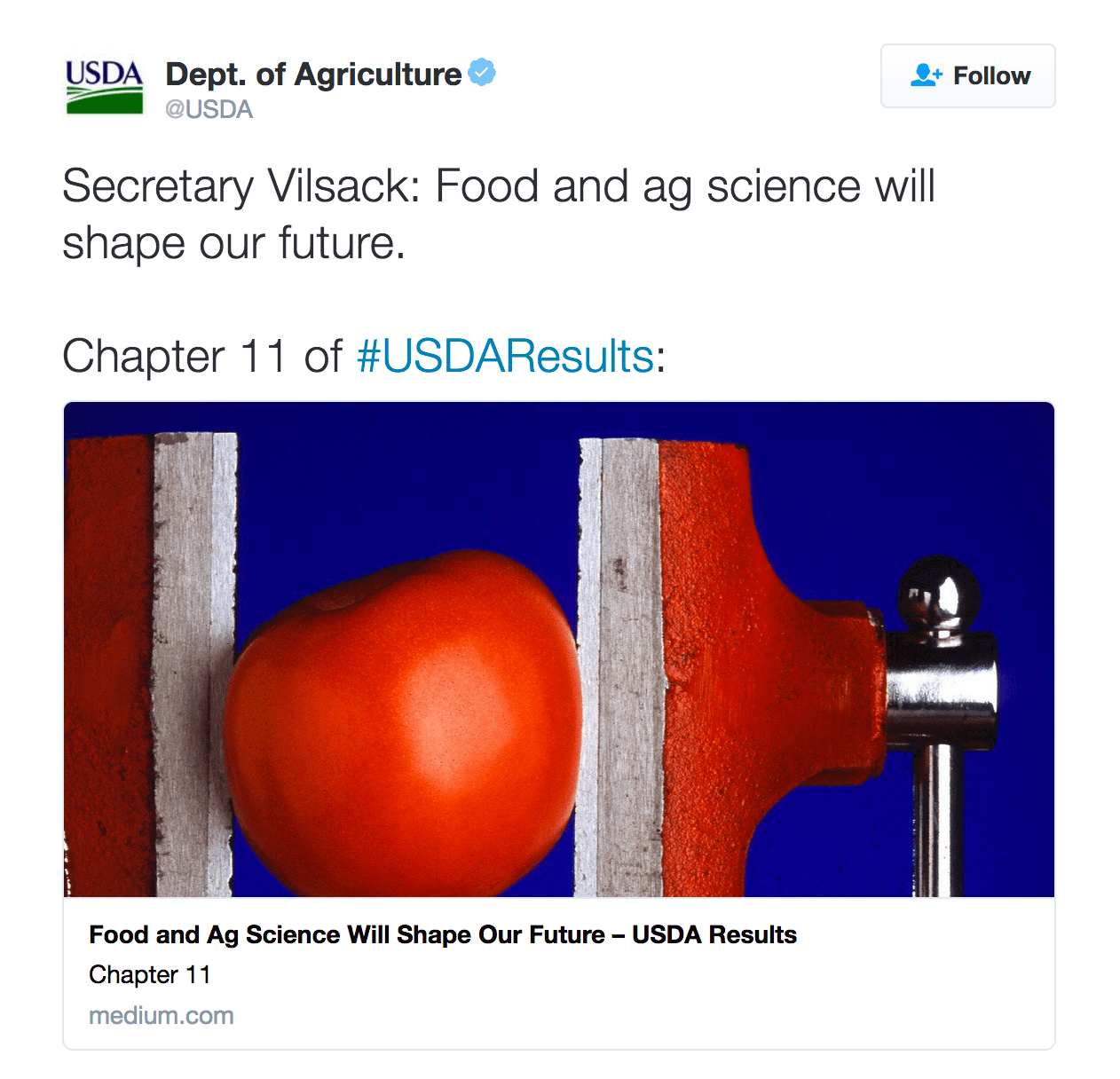 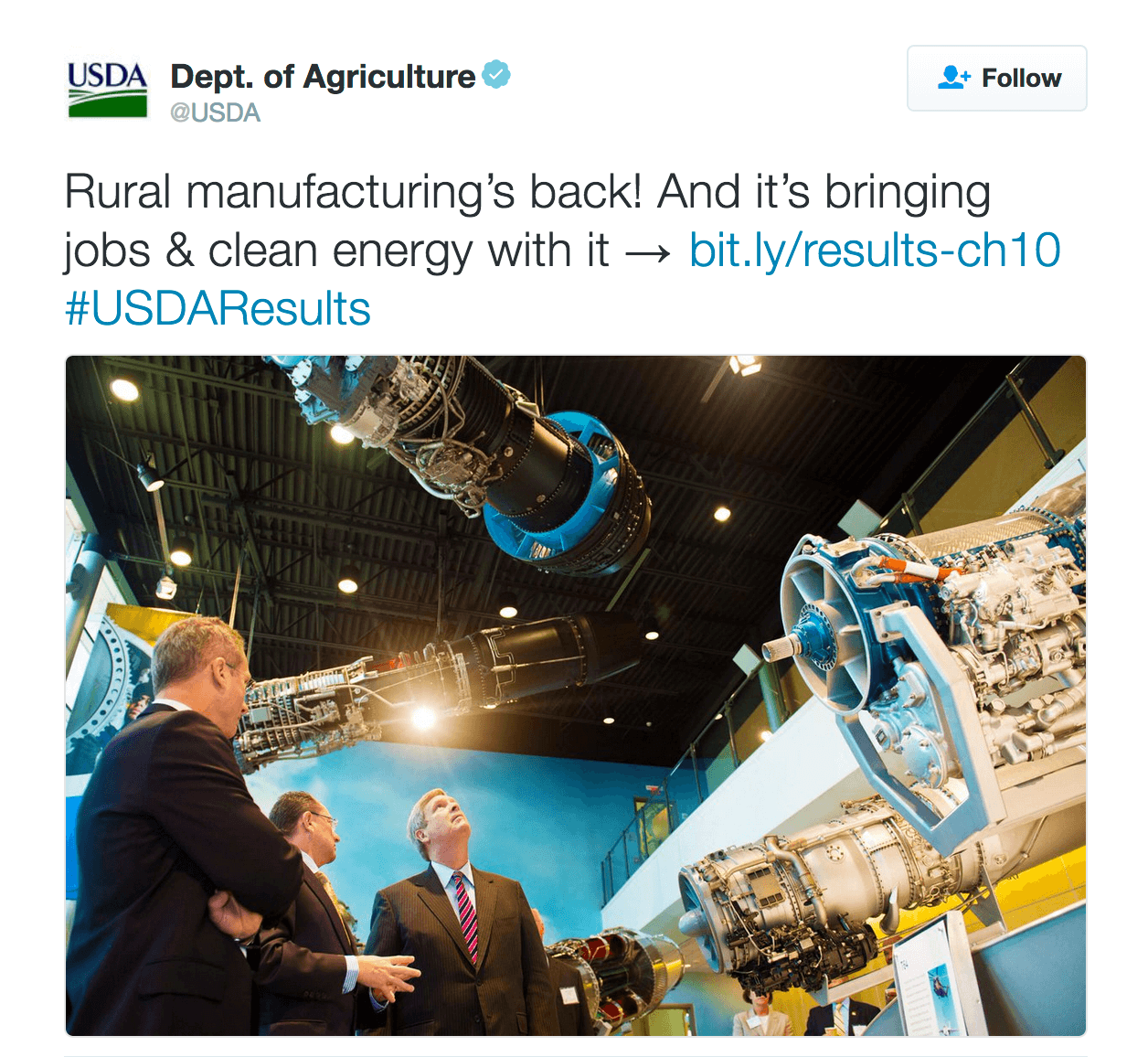
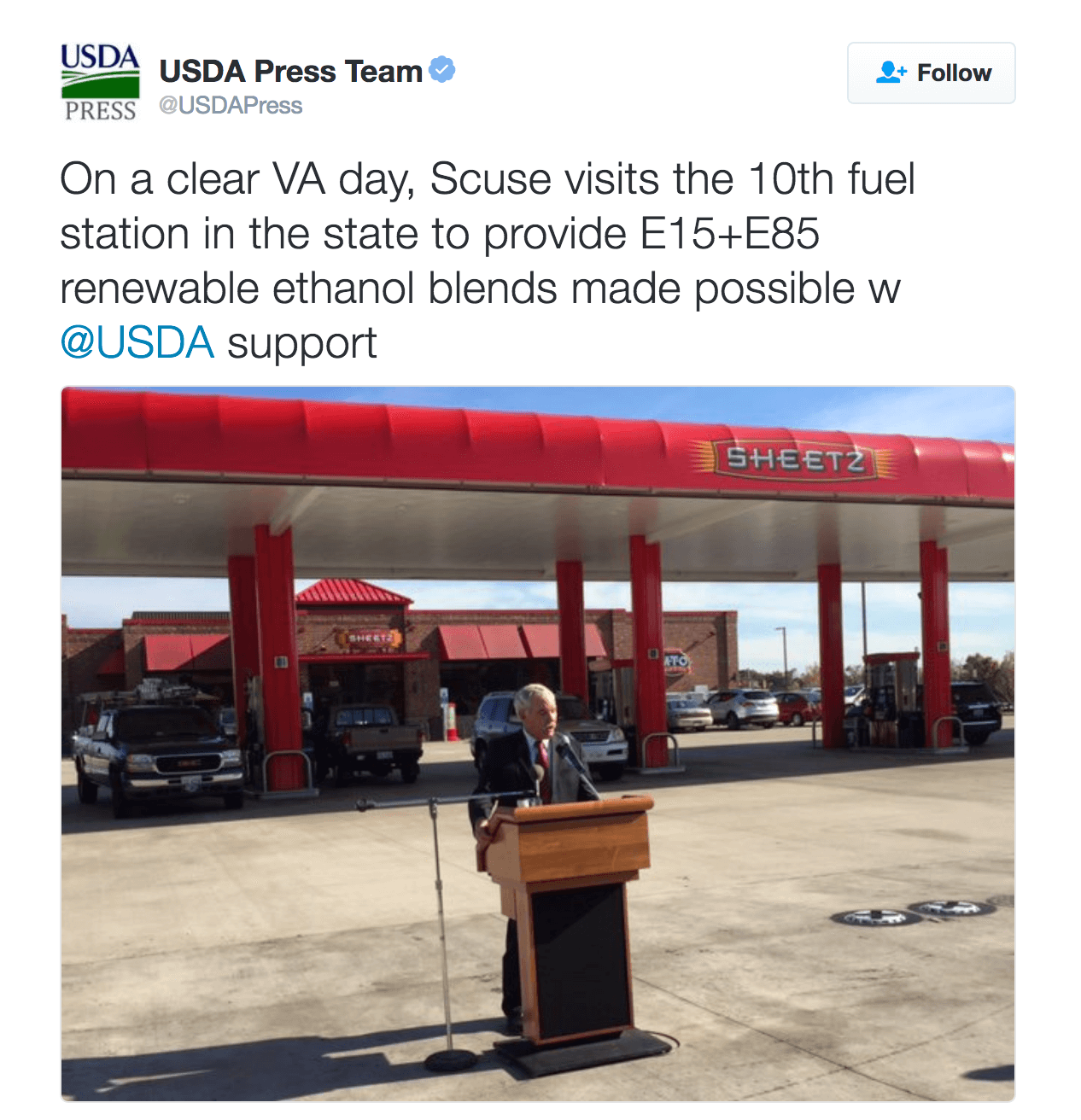




|

